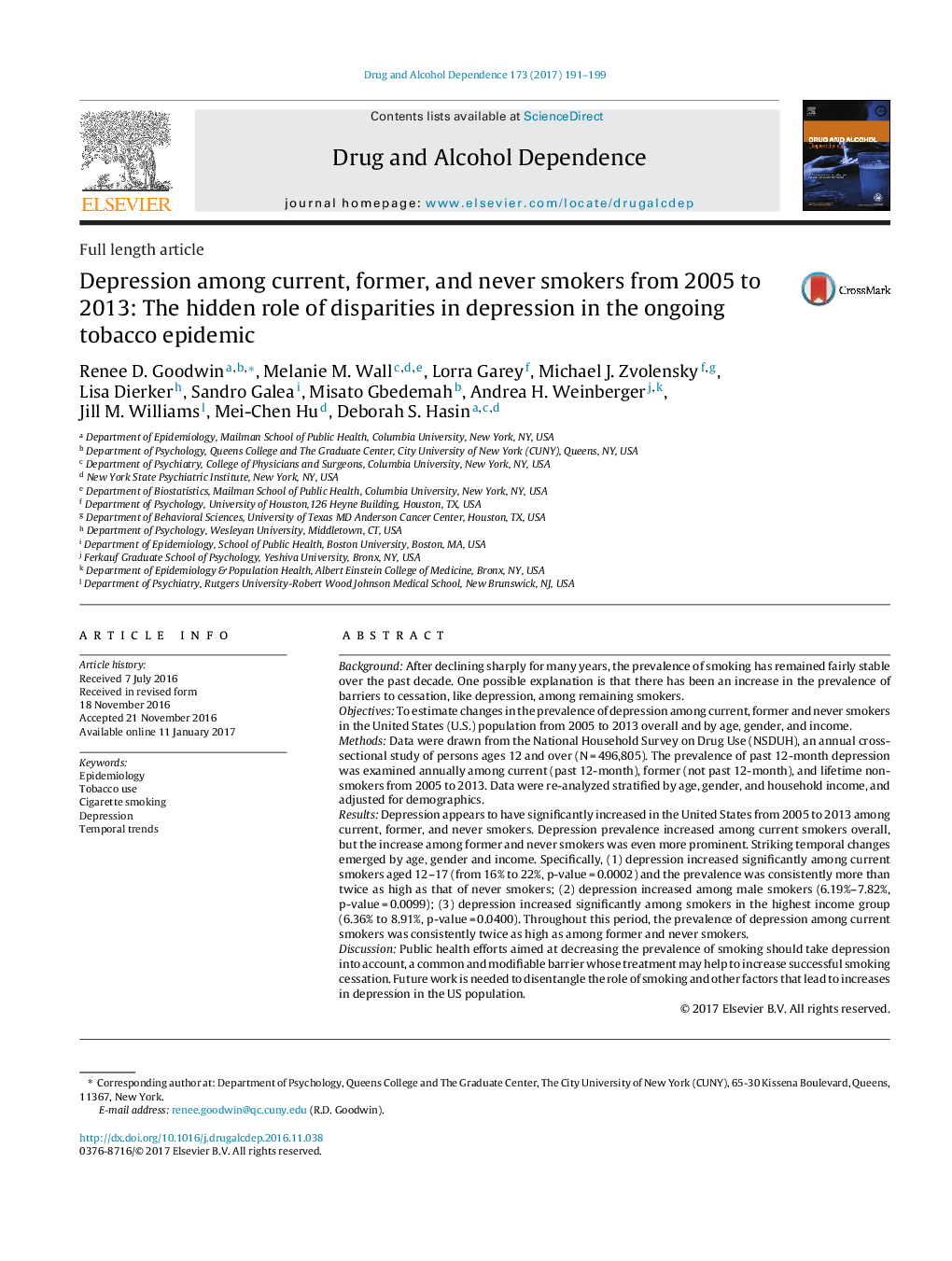| کد مقاله | کد نشریه | سال انتشار | مقاله انگلیسی | نسخه تمام متن |
|---|---|---|---|---|
| 5120169 | 1486118 | 2017 | 9 صفحه PDF | دانلود رایگان |
- Depression is persistently twice as common among current smokers, compared with former and never smokers from 2005-2013.
- Depression has not significantly increased among current smokers overall from 2005-2013.
- Depression has increased significantly among demographic subgroups of current smokers.
- Depression increased most prominently among young, male and high-income daily smokers.
BackgroundAfter declining sharply for many years, the prevalence of smoking has remained fairly stable over the past decade. One possible explanation is that there has been an increase in the prevalence of barriers to cessation, like depression, among remaining smokers.ObjectivesTo estimate changes in the prevalence of depression among current, former and never smokers in the United States (U.S.) population from 2005 to 2013 overall and by age, gender, and income.MethodsData were drawn from the National Household Survey on Drug Use (NSDUH), an annual cross-sectional study of persons ages 12 and over (N = 496,805). The prevalence of past 12-month depression was examined annually among current (past 12-month), former (not past 12-month), and lifetime non-smokers from 2005 to 2013. Data were re-analyzed stratified by age, gender, and household income, and adjusted for demographics.ResultsDepression appears to have significantly increased in the United States from 2005 to 2013 among current, former, and never smokers. Depression prevalence increased among current smokers overall, but the increase among former and never smokers was even more prominent. Striking temporal changes emerged by age, gender and income. Specifically, (1) depression increased significantly among current smokers aged 12-17 (from 16% to 22%, p-value = 0.0002) and the prevalence was consistently more than twice as high as that of never smokers; (2) depression increased among male smokers (6.19%-7.82%, p-value = 0.0099); (3) depression increased significantly among smokers in the highest income group (6.36% to 8.91%, p-value = 0.0400). Throughout this period, the prevalence of depression among current smokers was consistently twice as high as among former and never smokers.DiscussionPublic health efforts aimed at decreasing the prevalence of smoking should take depression into account, a common and modifiable barrier whose treatment may help to increase successful smoking cessation. Future work is needed to disentangle the role of smoking and other factors that lead to increases in depression in the US population.
Journal: Drug and Alcohol Dependence - Volume 173, 1 April 2017, Pages 191-199
